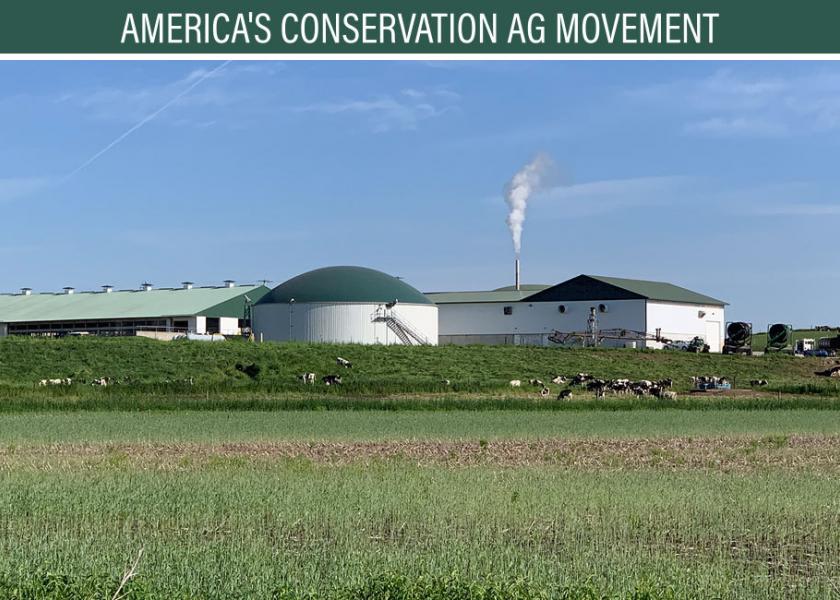Dairy Farmer Says Federal Support Could Increase Dairy Sustainability

Dairy producers are not strangers to sustainability. In fact, over the past several decades dairy producers have reduced the carbon footprint of a gallon of milk significantly. Still, the industry has committed to reaching the goal of net zero by 2050, a goal Indiana dairy producer Mike McCloskey says could be met sooner with federal support.
“We have committed in the dairy industry that we are going to go to net zero,” said McCloskey, chairman of the National Milk Producers Federation’s Environmental Issues Committee, in a hearing of the House Committee on Agriculture’s Subcommittee on Commodity Exchanges, Energy, and Credit. “We can get there with your support.”
The dairy industry has adopted an ambitious goal of becoming a carbon-neutral sector of the economy by 2050 through its Net-Zero Initiative, a partnership among farmers and the entire production chain. But with policies that encourage dairy farmers to widely adopt emissions-reduction technologies, such as anaerobic digesters, spur private investment and alleviate market uncertainty, the goal could likely be reached even sooner, McCloskey said.
During his testimony, McCloskey told the lawmakers about his experience installing the handful of methane digesters on his farm. He explained that digesters are a welcomed technology in the dairy industry, but the cost of installing a digester makes it cost prohibitive for many farms.
“There are currently 254 digesters operating on livestock farms in the U.S., of which 204 are on dairy farms,” he explained. “When we installed our digester, there were significantly fewer in operation and far less shared knowledge about biogas generation among farmers, cooperatives, USDA, EPA, digester engineers and energy companies to help get a digester project from concept to installation and profitability.”
McCloskey thanked the committee for incentivizing biogas production on farms and urged the lawmakers to continue helping producers generate biogas and improve their economic and environmental sustainability.
“The Biogas Opportunities Roadmap estimates that over 8,000 potential livestock farms, of which 2,704 are dairy operations, could host a biogas system, producing 13.1 billion kWh per year, or enough to power 1.089 million homes for a year. To meet this potential capacity, however, we must overcome a variety of financial and regulatory roadblocks.”
According to McCloskey, the primary impediment to on-farm digester adoption is the lack of financial incentives available to farmers.
“I strongly believe that once the proper incentives are in place, digesters will be adopted throughout the industry. It is the proper role of government to help facilitate early adoption to the point that economies of scale develop, technologies advance, and capital costs drop,” he said.
“Our industry has been significantly impacted by the uncertain farm economy (even before COVID-19), and digesters, which inherently entail long-term planning and significant capital costs, are simply out of reach for most farmers. Dairy farmers strive to be part of the solution to the climate and water quality challenges facing U.S. agriculture, but our voluntary efforts can only go so far without the continued support of Congress, USDA, DOE and EPA.”
McCloskey pointed out that digesters don’t have the same appeal for lawmakers as solar power seems to. USDA data shows that from 2002 to 2019, the agency made 631 investments in anaerobic digestion worth $198 million, compared to 6,179 in solar worth $2.93 billion and 696 in wind worth $468 million.
USDA has provided more than 10 times as much in grants, loans, loan guarantees and payments for solar production than it has for anaerobic digestion, according to McCloskey.
“Biogas production is representative of the comprehensive systems approach we are taking on our farms to work toward a goal of net-zero emissions,” he said. “The Net Zero Initiative is about each dairy farm – regardless of size, region, or production style – contributing what it can, where it can.”
To watch McCloskey’s full testimony, you can view it here.







